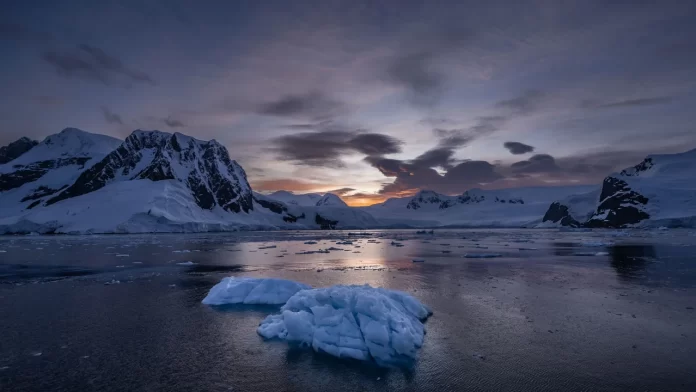As the Northern Hemisphere experiences a record-breaking summer heatwave, the Southern Hemisphere is witnessing an alarming climate record during its winter. Antarctic sea ice has reached unprecedented lows for this time of year, raising concerns among scientists.
Normally, Antarctic sea ice reaches its lowest levels by the end of February, during the continent’s summer, and then gradually builds back up over the winter. However, this year, the sea ice has not returned to the expected levels. In fact, it is currently at the lowest levels for this time of year since records began 45 years ago. Data from the National Snow and Ice Data Center (NSIDC) reveals that the ice is approximately 1.6 million square kilometers (0.6 million square miles) below the previous winter record low set in 2022.
In mid-July, Antarctica’s sea ice measured 2.6 million square kilometers (1 million square miles) below the 1981 to 2010 average. To put it into perspective, this area is almost as large as Argentina or the combined areas of Texas, California, New Mexico, Arizona, Nevada, Utah, and Colorado.
The Antarctic is a complex and remote continent, unlike the Arctic, where sea ice has shown a consistent downward trend due to the climate crisis. In the Antarctic, sea ice levels have fluctuated between record highs and lows in recent decades, making it challenging for scientists to fully comprehend its response to global heating. However, since 2016, a steep downward trend in Antarctic sea ice has been observed, leading many scientists to suspect that climate change is a significant factor in the disappearing ice.
Various factors contribute to sea ice loss, including the strength of the westerly winds around Antarctica, which have been linked to increased planet-heating pollution. Additionally, warmer ocean temperatures north of the Antarctic Ocean boundary may be mixing into the isolated waters, impacting the ice.
In late February of this year, Antarctic sea ice reached its lowest extent on record, measuring 691,000 square miles. This winter’s unprecedented occurrence could signal a long-term change for the isolated continent. Scientists believe that the Antarctic system might not recover in the same way it did in the past, indicating a potential new normal for the region.
While some experts exercise caution, acknowledging the large year-to-year variability of Antarctic sea ice, others believe that the extreme level of variation observed in recent years, especially this year, suggests a significant shift that may have long-lasting implications for the region’s climate and ice coverage. Further research and monitoring are necessary to understand the full extent and implications of this alarming trend.
